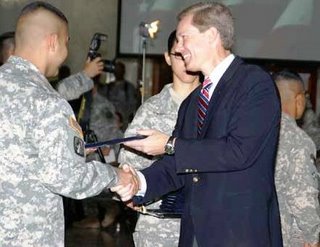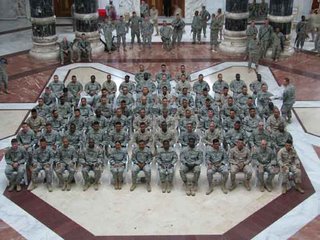
Most employers tell us that they don’t want to hire illegal workers. They just aren’t always sure how to tell who’s legal and who’s not. That is where
E-Verify comes in. It’s a free and voluntary program that lets employers quickly check the status of new employees online.
E-Verify is an enormous success. It works to make sure the workers’ name and social security number match, and that noncitizen workers are authorized to work. The system is good at keeping illegal workers out of the workplace. About 5% of all the workers who are checked by the system cannot establish that they are authorized to work in the United States. Most of them walk away when they are challenged, even though it’s easy for legal workers to fix their out-of-date information in the Social Security Administration’s (SSA) database. (Actually, it’s not just easy. It’s a really good idea and will help legal workers get Social Security benefits more quickly if they are hurt on the job or when they retire).
What about legal workers? We don’t want to make getting a new job more difficult than it should be. Here too, the story is a good one. For 98% of the workers who are actually authorized to work in the US, the system returns an instant green light – not even a data mismatch to update. Put another way, for practically everyone except the 5% who aren’t legal, E-Verify provides instant verification. No hassles, no sweat, no window for discrimination. Of course, getting to this point has taken a lot of sweat on the part of DHS. We asked Westat, a respected research firm, to do independent evaluations of E-Verify five years ago and again this year, and the Westat evaluation showed that the “instant green light” rate has risen exponentially in those years, thanks largely to improvements in DHS records.
We’re not resting on our laurels, though. We’re working to get from 98 to 99% or higher. We won’t get to 100% because the 2% of work authorized new hires who get a “yellow light” often have forgotten to update their Social Security record. Perhaps they didn’t tell Social Security when they became a U.S. citizen, or when they married and changed their name. Since that’s a problem that needs to be fixed, some would say that they should be pushed into fixing it. However, we are trying to reduce even those cases. Our newest enhancement will allow E-Verify to check naturalization records electronically, even for people who have never notified Social Security of their new status. (The Westat report does not mention this enhancement, since it will not be implemented for another month or so.)
Early next year, we also will provide a 1-800 number to resolve SSA “yellow lights”, which will eliminate time-consuming personal visits to government offices. As an even longer-term improvement, we plan to regularly update the SSA database with naturalized citizen data to prevent mismatches in the future. In addition, we will continue to bring more of our records on line, so that no worker gets a “yellow light” because our records are not up to date; that effort is also underway.
At the same time, we are improving the enforcement capabilities of E-Verify. In order to prevent illegal workers from simply stealing the name and Social Security number of a legal worker, we are putting photos on line, so employers will see the photo that should be on the ID the worker presents.
As a result of these changes, E-Verify is a remarkable success story. The number of employers using it has doubled in each of the last few years, and enrollments are increasing by a thousand employers a week.
It’s an iron law of Washington, though, that if you actually take immigration enforcement seriously, you’re going to make a lot of powerful interests angry. And so it’s not a surprise that the success of E-Verify has engendered a big increase in criticism.
Probably the most aggravating claim, made in a recent article by a business lobbyist, is that E-Verify could increase discrimination against immigrants. I don’t understand why a business representative would accuse his own industry of being prone to discrimination, but even if that’s so, E-Verify won’t make employers more likely to discriminate. In fact, the Westat report found that employers using E-Verify said they were more willing to hire foreign-born workers, not less. Rather than promoting discrimination, E-Verify is actually becoming a safeguard against discrimination, because it objectively verifies the employment authorization of foreign-born workers who might otherwise be the subject of subjective guesses about employment eligibility.
Stewart A. Baker
Assistant Secretary for Policy
Labels: E-Verify, immigration enforcement, USCIS










